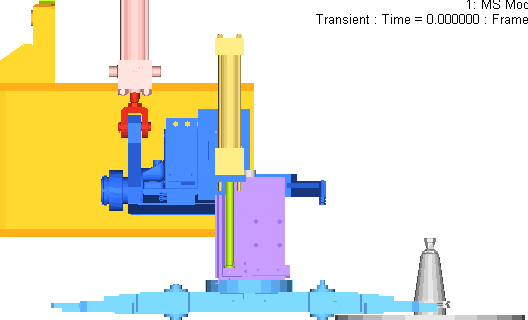Hi guys, I need your help!
I'm simulating the translation of an arm actuated by a pneumatic cylinder (constant force) whose movement is stopped by a limit switch.
How can I simulate the limit switch to stop the motion of the translating arm keeping the force acting on the piston (as happens in reality), avoiding the penetration of bodies (see the attached .gif)?
I'm not interested in 'Collision detection' button, since after this forced has stopped, I want another force to start acting on another body.
Thank you all!
<?xml version="1.0" encoding="UTF-8"?>